Disney has captivated audiences for generations with its memorable animal characters, many of which are based on real-world species. While these animated creatures often speak, sing, and display human-like behaviors, their designs and characteristics frequently draw inspiration from actual animals. This fascinating blend of fantasy and reality helps create characters that resonate with viewers while subtly educating audiences about the animal kingdom. Let’s explore 15 beloved Disney animal characters and examine how they compare to their real-life counterparts, uncovering the accuracy, creative liberties, and interesting facts about each pairing.
13. Simba from “The Lion King” and African Lions

Simba, the iconic protagonist of “The Lion King,” is based on the African lion (Panthera leo), the second-largest big cat species. Disney’s animators captured many accurate physical traits of male lions, including the distinctive mane that develops as males mature—a detail faithfully represented in Simba’s transition from cub to adult. However, real lion prides function differently than portrayed in the film. In nature, female lions do most of the hunting while males primarily defend territory. Lion prides typically consist of related females, their cubs, and a small number of adult males, rather than the single-male leadership depicted in the movie. Additionally, real lions face significant conservation challenges, with African lion populations having decreased by approximately 43% over the past three decades, primarily due to habitat loss and human conflict—a stark contrast to the relatively stable Pride Lands of the film.
12. Dory from “Finding Nemo” and Blue Tangs

The forgetful but lovable Dory is based on the Pacific blue tang (Paracanthurus hepatus), also known as the palette surgeonfish or regal tang. Disney accurately depicted the vibrant blue coloration and distinctive black markings of this species, which is native to coral reefs in the Indo-Pacific region. However, Dory’s infamous short-term memory loss is a creative liberty; there’s no scientific evidence suggesting blue tangs suffer from memory problems. In reality, these fish are quite intelligent and can recognize familiar individuals. After “Finding Nemo” was released in 2003, demand for blue tangs as pets skyrocketed, highlighting the “Nemo effect”—a phenomenon where animated films drive consumer interest in exotic pets. Unlike clownfish, however, blue tangs cannot be bred in captivity and are wild-caught, raising conservation concerns. These fish can grow up to 12 inches long and require large, specialized tanks—making them unsuitable pets for most home aquariums despite their Disney fame.
11. Zazu from “The Lion King” and Red-billed Hornbills
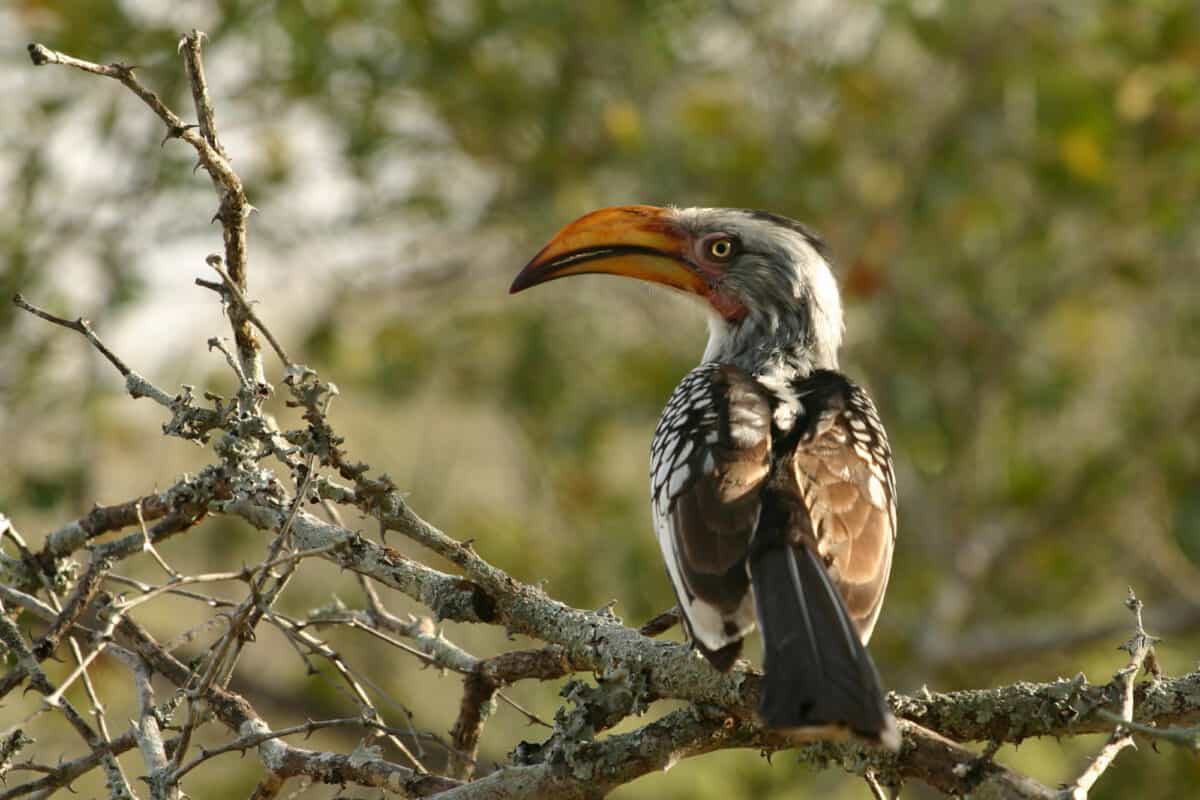
Zazu, King Mufasa’s loyal advisor in “The Lion King,” is modeled after the red-billed hornbill (Tockus erythrorhynchus), a bird native to the savannas of sub-Saharan Africa. Disney accurately captured several physical characteristics of this species, including its distinctive long, curved red bill, white belly, and black-and-white plumage. In the wild, these birds are indeed found in the same habitats as lions, making Zazu’s presence in the Pride Lands ecologically accurate. Red-billed hornbills are known for their unique nesting behavior: females seal themselves inside tree cavities using mud, feces, and food remains, leaving only a small slit through which males deliver food—a fascinating detail not explored in the film. Unlike the solitary royal advisor portrayed in the movie, real hornbills are typically seen in pairs or small family groups. They primarily feed on insects, making them valuable natural pest controllers in their ecosystem, a role somewhat reflected in Zazu’s meticulous and detail-oriented personality.
10. Dumbo and Asian Elephants

The titular character of “Dumbo” (1941) is based on the Asian elephant (Elephas maximus), though with the obvious creative liberty of extremely oversized ears that enable flight. In reality, Asian elephants have notably smaller ears than their African counterparts, making Dumbo’s enormous ears particularly fanciful. The film does accurately depict elephant social structures, showing the close bond between Dumbo and his mother, Mrs. Jumbo. This reflects the strong matriarchal family units observed in wild elephants, where females and their young form tight-knit groups led by an experienced matriarch. The movie also depicts the use of elephants in circuses, a practice that has since become controversial and has been eliminated by many circus companies due to animal welfare concerns. Asian elephants are currently listed as endangered, with fewer than 50,000 remaining in the wild—a significant conservation issue not addressed in the cheerful 1941 film. While Dumbo’s flying ability is purely fictional, the intelligence and emotional depth portrayed in the character do reflect the cognitive abilities documented in real elephants.
9. Timon from “The Lion King” and Meerkats

Timon, the carefree philosopher from “The Lion King,” is based on the meerkat (Suricata suricatta), a small mongoose species native to southern Africa. Disney accurately depicted several physical characteristics of meerkats, including their slender bodies, distinctive dark eye markings, and ability to stand upright on their hind legs—a vigilant posture meerkats use to scan for predators. However, Timon’s solitary lifestyle with Pumbaa contrasts sharply with real meerkat behavior. In nature, meerkats are highly social animals living in colonies called “mobs” or “gangs” that typically contain 20-50 individuals. These groups maintain complex social structures with cooperative breeding, communal care of young, and sentinel duties where individuals take turns watching for danger while others forage. The film’s depiction of Timon living in a tropical jungle environment is also inaccurate, as real meerkats inhabit arid regions like the Kalahari Desert, where they’ve adapted to harsh conditions with specialized digging abilities and resistance to certain venoms. These small carnivores primarily eat insects, particularly scorpions and beetles, rather than the “slimy yet satisfying” grubs featured in the movie.
8. Sebastian from “The Little Mermaid” and Caribbean Crabs

Sebastian, the musical crustacean from “The Little Mermaid,” appears to be inspired by the Caribbean red crab (Gecarcinus ruricola), though Disney never specified his exact species. His bright red coloration is accurate for many crab species found in Caribbean waters, and his musical talents, while obviously fantastical, might reference the rhythmic clicking sounds some crabs make with their claws. However, Sebastian’s anatomical design takes significant creative liberties. Real crabs have ten legs (including their claws), while Sebastian is depicted with only six limbs plus his claws. Additionally, Sebastian speaks with a Jamaican accent despite the film being set near Denmark in Hans Christian Andersen’s original tale—a geographical inconsistency that privileges character appeal over biological accuracy. In nature, most crab species are not exclusively marine dwellers; many, including the Caribbean red crab, are semi-terrestrial and make annual migrations between land and sea for breeding purposes. These mass migrations can involve millions of crabs moving simultaneously—a spectacular natural phenomenon that would have made for an impressive musical number had Disney’s animators been aware of it.
7. Pumbaa from “The Lion King” and Warthogs
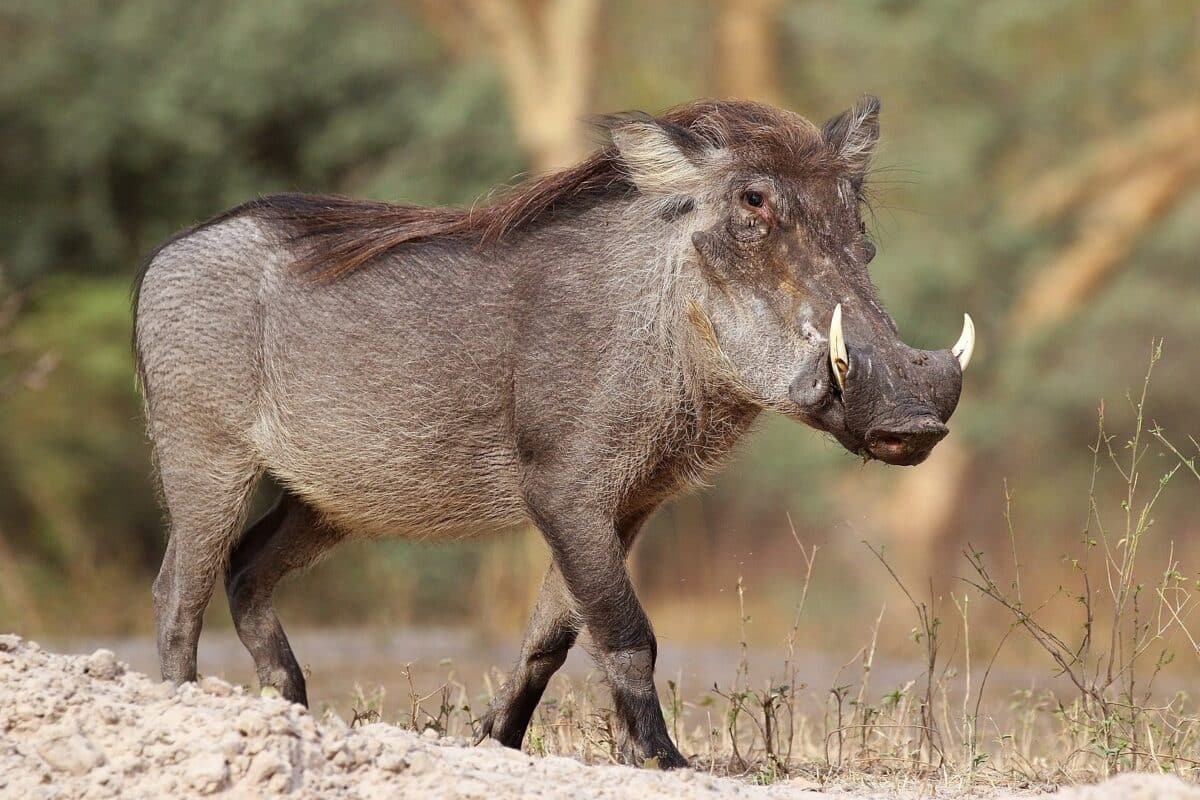
Pumbaa, Timon’s flatulent friend in “The Lion King,” is based on the common warthog (Phacochoerus africanus), a wild member of the pig family native to sub-Saharan Africa. Disney accurately captured several distinctive features of warthogs, including their large, flat heads, facial warts (which are actually protective pads), and upward-curving tusks. The animators also correctly portrayed warthogs’ habit of kneeling on their front legs while feeding, a unique posture that allows them to efficiently dig for roots and bulbs. However, Pumbaa’s rotund physique is exaggerated for comedic effect; wild warthogs are actually quite lean and athletic, capable of running up to 30 mph to escape predators. While the movie plays up Pumbaa’s methane emissions for laughs, real warthogs do have notoriously poor eyesight and a strong odor, which may have inspired this character trait. In nature, warthogs are not solitary outcasts as portrayed in the film, but typically live in small family groups called sounders. Female warthogs are particularly protective of their young, often backing into burrows with tusks facing outward to defend against predators—a maternal ferocity not explored through Pumbaa’s gentle, comedic character.
6. Flounder from “The Little Mermaid” and Tropical Fish
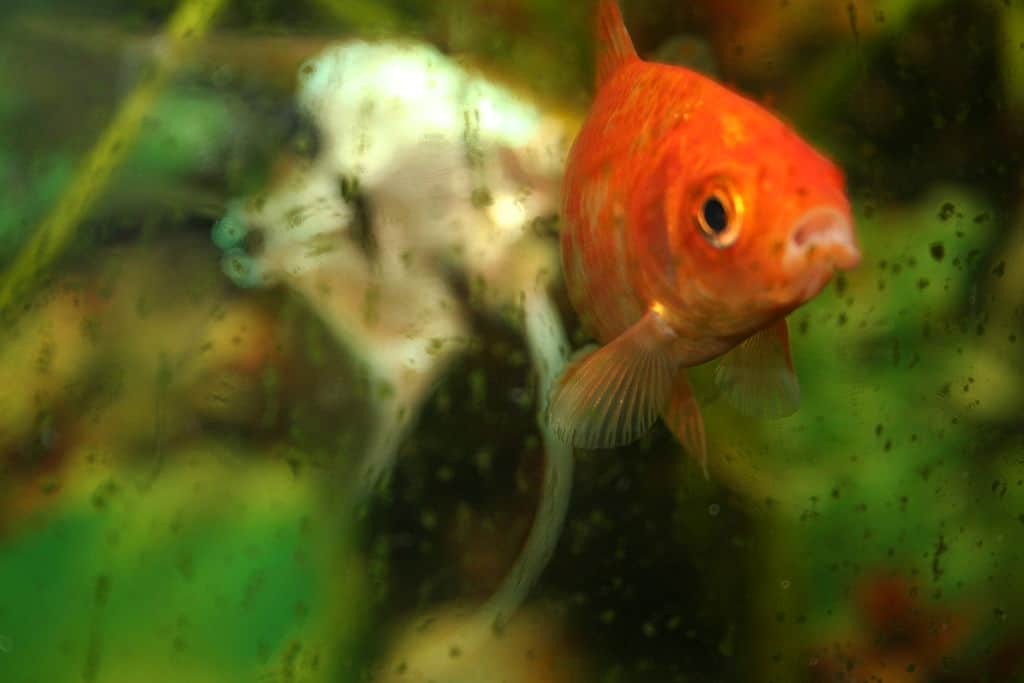
Despite his name, Ariel’s faithful friend Flounder from “The Little Mermaid” is not actually a flounder at all. Real flounders are flat-bodied, bottom-dwelling fish with both eyes on one side of their head. Instead, Flounder’s bright yellow and blue coloration more closely resembles a tropical reef fish, possibly inspired by species like the royal blue tang or yellow tang. This naming inconsistency was likely a deliberate choice to give the character a catchy, child-friendly name rather than aiming for taxonomic accuracy. In the wild, many colorful reef fish species do form symbiotic relationships with other marine creatures, though not quite like the friendship portrayed between Ariel and Flounder. The character’s timid personality contrasts with most real reef fish, which have complex social behaviors and territorial displays. Interestingly, many tropical fish species that inspired Flounder’s appearance undergo dramatic color changes as they mature or change sex throughout their lives—a biological phenomenon not explored in the film. While Flounder’s ability to survive in various ocean depths and temperatures throughout the movie would be impossible for any single fish species, his distinctive coloration accurately reflects the vibrant biodiversity found in coral reef ecosystems.
5. Thumper from “Bambi” and Cottontail Rabbits
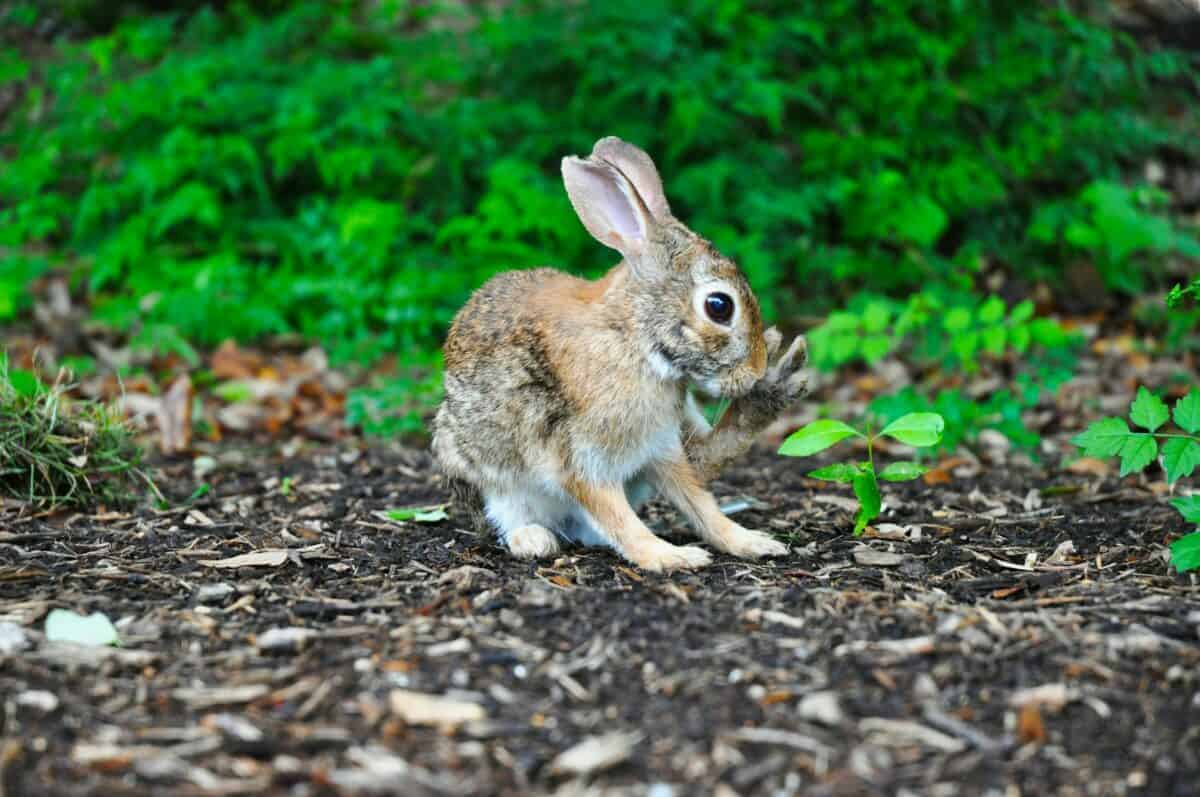
Thumper, the energetic rabbit from “Bambi” (1942), appears to be based on the eastern cottontail rabbit (Sylvilagus floridanus), a common species in North American forests. Disney animators captured several accurate behavioral traits of rabbits, most notably the foot-thumping behavior that gave Thumper his name. In nature, rabbits thump their powerful hind legs on the ground as a warning signal to alert other rabbits of potential danger—a communication method that serves as an alarm system within rabbit communities. The film also accurately portrays young rabbits’ playful nature and their rapid physical development, though Thumper’s extended adolescence is prolonged for storytelling purposes. Real cottontail rabbits mature quickly, with young rabbits becoming independent at just 4-5 weeks old and reaching reproductive age by 2-3 months. The winter scenes in “Bambi” correctly show cottontails remaining active year-round rather than hibernating, though their winter diet would consist mainly of bark and twigs rather than the green vegetation shown. Thumper’s prominent front teeth accurately reflect rabbits’ continuously growing incisors, which must be worn down through constant gnawing—a biological necessity that manifests as the character’s chatty, sometimes tactless personality.
4. Baloo from “The Jungle Book” and Sloth Bears
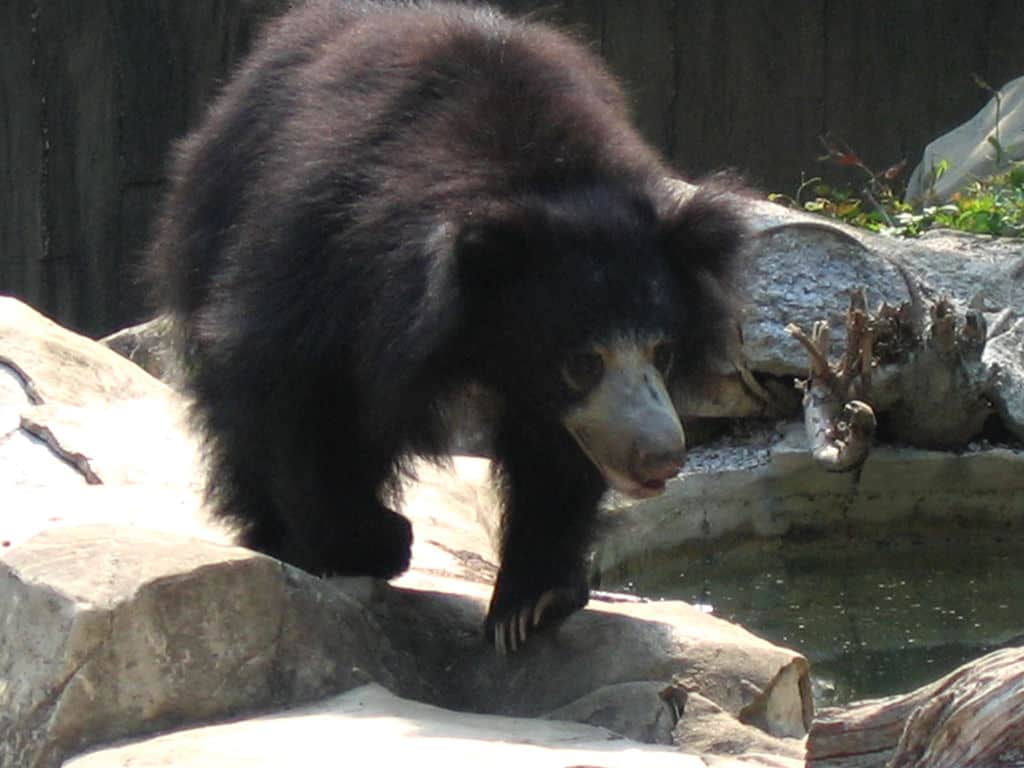
The laid-back Baloo from “The Jungle Book” is based on the sloth bear (Melursus ursinus), a species native to the Indian subcontinent where Rudyard Kipling’s original story is set. Disney accurately captured several distinctive features of sloth bears, including their shaggy black fur, pale snout, and elongated muzzle adapted for feeding on insects. In the wild, sloth bears use their protruding snout and lack of upper front teeth to create suction, allowing them to vacuum up termites and ants—a specialized feeding technique that inspired their scientific name Melursus, meaning “honey bear.” While Baloo’s happy-go-lucky personality is anthropomorphized, real sloth bears are generally more aggressive than other bear species and have been known to attack humans when threatened. The “bare necessities” philosophy espoused by Baloo does loosely parallel the omnivorous, opportunistic feeding habits of actual sloth bears, which consume whatever foods are seasonally available, from fruits and flowers to insects and carrion. Unfortunately, wild sloth bears face significant conservation challenges not hinted at in the cheerful Disney adaptation; they’re currently listed as vulnerable, with populations declining due to habitat loss and poaching for traditional medicine markets.
3. Pascal from “Tangled” and Chameleons

Pascal, Rapunzel’s loyal companion in “Tangled,” is based on a chameleon, though his species is never explicitly identified. Disney accurately portrayed several chameleon characteristics, most notably Pascal’s color-changing ability, which he uses to express emotions and blend with surroundings. In nature, chameleons change color through special cells called chromatophores that contain pigments; contrary to popular belief, they primarily change colors for communication and thermoregulation rather than camouflage. The film correctly shows Pascal using his prehensile tail for gripping and his independently movable eyes that can rotate in different directions simultaneously—allowing real chameleons a 360-degree field of vision. However, Pascal’s expressive facial features and hand-like appendages are anthropomorphized; actual chameleons have limited facial mobility and specialized feet with fused digits forming opposing grasping pads. The movie also takes creative liberties with Pascal’s size; most pet chameleon species are significantly larger than the pocket-sized Pascal, typically ranging from 4-24 inches depending on the species. While the film portrays Pascal as devoted and highly social, wild chameleons are generally solitary and territorial animals that prefer to live alone except during breeding—making Pascal’s attachment to Rapunzel more reflective of human companionship than natural chameleon behavior.
2. Bambi and White-tailed Deer

The titular character from “Bambi” (1942) is based on the white-tailed deer (Odocoileus virginianus), one of North America’s most common deer species. Disney’s animators conducted extensive studies of real deer to accurately capture their movement and anatomy, resulting in remarkably lifelike animation for the era. The film correctly portrays several aspects of deer development: Bambi’s spotted coat as a fawn (which provides camouflage in dappled forest light), the gradual loss of these spots as he matures, and the growth of antlers in males during adolescence. The movie also accurately depicts the seasonal cycle of antler growth and shedding, though it compresses this timeline for storytelling purposes. In nature, white-tailed deer bucks grow new antlers each spring and shed them in winter after the breeding season. The forest fire and hunting sequences highlight real threats faced by wild deer, though the film anthropomorphizes the animals’ emotional responses to these dangers. One biological inaccuracy involves Bambi’s birth; the film shows him born in spring, but white-tailed deer typically mate in fall with fawns born in late spring or early summer after a gestation period of about seven months—timing that ensures optimal food availability for nursing mothers and growing fawns.
1. Scuttle from “The Little Mermaid” and Seagulls

Scuttle, the well-meaning but misinformed bird from “The Little Mermaid,” appears to be based on the herring gull (Larus argentatus) or a similar seagull species common along coastlines worldwide. Disney accurately captured the general appearance of gulls, including Scuttle’s white and gray plumage, yellow bill with a red spot, and webbed feet. In nature, seagulls are indeed coastal birds that frequently interact with human objects as opportunistic scavengers—a trait humorously exaggerated through Scuttle’s comically incorrect “human artifact” identifications. While Scuttle’s knowledge of human items is played for laughs, real gulls display remarkable intelligence and adaptability, with documented tool use and the ability to learn complex behaviors by observing others. The film correctly places Scuttle in a coastal setting where gulls typically nest on cliffs or rocky outcrops, though his solitary lifestyle contrasts with the colonial nesting behavior of most gull species. Unlike Scuttle’s bumbling personality, wild gulls are highly efficient predators and scavengers with excellent eyesight and the ability to drink both fresh and salt water thanks to specialized glands that remove excess salt—sophisticated adaptations.
Conclusion:

Disney’s animated animal characters have long charmed audiences with their endearing personalities, emotional depth, and often human-like behavior. Yet behind the whimsical storytelling lies a surprising amount of biological inspiration. From Simba’s majestic mane to Pascal’s independently swiveling eyes, Disney animators often incorporate real-world traits and ecological details into their designs—though creative liberties are taken for humor, plot, and visual appeal. This fusion of fact and fantasy not only brings animals to life in magical ways but also sparks curiosity about the natural world. By examining the real-life counterparts of these 13 Disney creatures, we gain a greater appreciation for both the artistic ingenuity of animation and the fascinating adaptations of animals in the wild. Whether it’s a musical crab or a philosophizing meerkat, these characters remind us that nature itself is full of drama, beauty, and wonder worthy of the big screen.
- Why Some Frogs Glow in the Dark and What It Means - August 9, 2025
- The Most Powerful Hurricane to Ever Hit US Shores - August 9, 2025
- 10 Animals That Use Bizarre Survival Tactics - August 9, 2025

